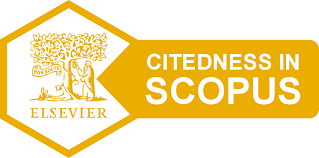Islamic Microcredit-based Financing Analysis: A Study of Islamic Banking in the Special Region of Yogyakarta
DOI:
https://doi.org/10.29240/alfalah.v8i1.6842Keywords:
Buying, Selling, Ethics, Member Card,Abstract
Purpose: The goal of this research is to find out how Sharia banking can overtake financing for MSMEs that are not yet bankable by sticking to prudential banking with a case study: Islamic Banking in the Special Region of Yogyakarta
Design/Method/Approach: This is qualitative research using a triangulation method to verify the validity of the data obtained. The research was undertaken at an Islamic bank in the Special Region of Yogyakarta, Indonesia disbursing KUR.
Findings: The results of this study are that Islamic banking in the Special Region of Yogyakarta (DIY) applies the 5 CS methods (Character, Capacity, Capital, Collateral, and Condition of Economy) when conducting a financing analysis of their prospective KUR recipient customers.
Organally/Value: The method found in this study is beneficial for analyzing unbankable MSMEs. Islamic banks can believe in the ability to pay prospective customers despite the limitations of the data and documents analyzed. This method is beneficial to help unbankable MSMEs to be able to access capital from Islamic banking.
Â
Downloads
References
Adnan, Muhammad Akhyar, and Shochrul Rohmatul Ajija. “The Effectiveness of Baitul Maal Wat Tamwil in Reducing Poverty the Case of Indonesian Islamic Microfinance Institution.†Humanomics 31, no. 2 (2015): 160–82. https://doi.org/10.1108/H-03-2012-0003.
Ahmad, Syedah, Robert Lensink, and Annika Mueller. “The Double Bottom Line of Microfinance: A Global Comparison between Conventional and Islamic Microfinance.†World Development 136 (December 1, 2020): 105130. https://doi.org/10.1016/j.worlddev.2020.105130.
Alkhan, Ahmed Mansoor, and M. Kabir Hassan. “Does Islamic Microfinance Serve MaqÄsid Al-Shari’a?†Borsa Istanbul Review 21, no. 1 (March 2021): 57–68. https://doi.org/10.1016/j.bir.2020.07.002.
Arikunto, Suharsimi. Prosedur Penelitian Suatu Pendekatan Praktek. Jakarta: PT Rineka Cipta, 1998.
Cameron, Alistair, Mandar Oak, and Yaping Shan. “Peer Monitoring and Islamic Microfinance.†Journal of Economic Behavior & Organization 184 (April 2021): 337–58. https://doi.org/10.1016/j.jebo.2021.02.001.
Chikwira, Collin, Edson Vengesai, and Petronella Mandude. “The Impact of Microfinance Institutions on Poverty Alleviation.†Journal of Risk and Financial Management 15, no. 9 (September 2022): 393. https://doi.org/10.3390/jrfm15090393.
Creswell, John W. Qualitative Inquiry and Research Design: Choosing among Five Approaches. 3rd ed. Los Angeles: SAGE Publications, 2013.
Denzin, Norman K., and Yvonna S. Lincoln, eds. Handbook of Qualitative Research. 2nd ed. Thousand Oaks, Calif: Sage Publications, 2000.
Disli, Mustafa, Ahmet F. Aysan, and Omneya Abdelsalam. “Favoring the Small and the Plenty: Islamic Banking for MSMEs.†Economic Systems 47, no. 1 (March 1, 2023): 101051. https://doi.org/10.1016/j.ecosys.2022.101051.
Fianto, Bayu Arie, Christopher Gan, Baiding Hu, and Jamal Roudaki. “Equity Financing and Debt-Based Financing: Evidence from Islamic Microfinance Institutions in Indonesia.†Pacific-Basin Finance Journal 52 (December 2018): 163–72. https://doi.org/10.1016/j.pacfin.2017.09.010.
Fianto, Bayu Arie, Hayu Maulida, and Nisful Laila. “Determining Factors of Non-Performing Financing in Islamic Microfinance Institutions.†Heliyon 5, no. 8 (August 2019): e02301. https://doi.org/10.1016/j.heliyon.2019.e02301.
Firdaus, Sella Kurnia Sari, and Deva Dwi Anggara. “Impact of Islamic Financing on Working Capital Management of Micro, Small, and Medium Enterprises in Tanjungpinang City, Indonesia.†Journal of Islamic Economics Lariba 8, no. 2 (December 24, 2022): 327–40. https://doi.org/10.20885/jielariba.vol8.iss2.art5.
Hamdan, Nur Hazirah Binti, and Salina Hj Kassim. “Effects of Islamic Microfinancing, Human Capital and ICT Usage on Women Micro-Entrepreneurs’ Performance in Malaysia.†Journal of Islamic Monetary Economics and Finance 8 (December 29, 2022): 125–52. https://doi.org/10.21098/jimf.v8i0.1421.
Hossain, Basharat, and Syed Naimul Wadood. “Impact of Urban Microfinance on the Livelihood Strategies of Borrower Slum Dwellers in the Dhaka City, Bangladesh.†Journal of Urban Management 9, no. 2 (2020): 151–67. https://doi.org/10.1016/j.jum.2019.12.003.
Indriantoro, Nur; Bambang Supomo. Metodologi Penelitian Bisnis Untuk Akuntansi Dan Manajemen. Yogyakarta: BPFE, 2002.
Katterbauer, Klemens, and Philippe Moschetta. “A Deep Learning Approach to Risk Management Modeling for Islamic Microfinance.†European Journal of Islamic Finance 9, no. 2 (July 20, 2022): 35–43. https://doi.org/10.13135/2421-2172/6202.
Kemenkeu RI. “Kajian Fiskal Regional D.I. Yogyakarta Triwulan I Tahun 2022.†Kajian Fiskal Regional D.I. Yogyakarta Triwulan I Tahun 2022, June 2, 2022. https://djpb.kemenkeu.go.id/kanwil/diy/id/profil/309-artikel/3294-kajian-fiskal-regional-d-i-yogyakarta-triwulan-i-tahun-2022.html.
Kementrian Koordinator Bidang Perekonomian Republik Indonesia. “Evolusi KUR.†Kementrian Koordinator Bidang Perekonomian Republik Indonesia., 2019. http://kur.ekon.go.id/evolusi-kur.
Downloads
Additional Files
Published
How to Cite
Issue
Section
Citation Check
License
Copyright (c) 2023 Syah Amelia Manggala Putri, Eka Jati Rahayu Firmansyah, Safaah Restuning Hayati

This work is licensed under a Creative Commons Attribution-NonCommercial-ShareAlike 4.0 International License.
Authors who publish with Al-FALAH : Journal of Islamic Economics agree to the following terms:
- Authors retain copyright and grant the journal right of first publication with the work simultaneously licensed under a CC BY-SA 4.0 Deed | Attribution-ShareAlike 4.0 International | Creative Commons (CC BY-SA 4.0) that allows others to share the work with an acknowledgment of the work's authorship and initial publication in this journal.
- Authors are able to enter into separate, additional contractual arrangements for the non-exclusive distribution of the journal's published version of the work (e.g., post it to an institutional repository or publish it in a book), with an acknowledgment of its initial publication in this journal.
- Authors are permitted and encouraged to post their work online (e.g., in institutional repositories or on their website) prior to and during the submission process, as it can lead to productive exchanges, as well as earlier and greater citation of published work (See The Effect of Open Access).







 This work is licensed under a
This work is licensed under a 